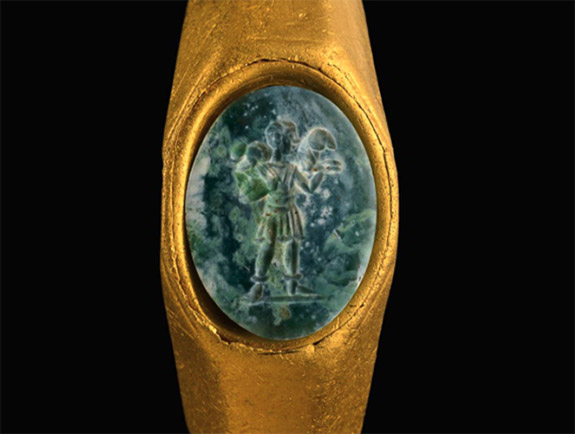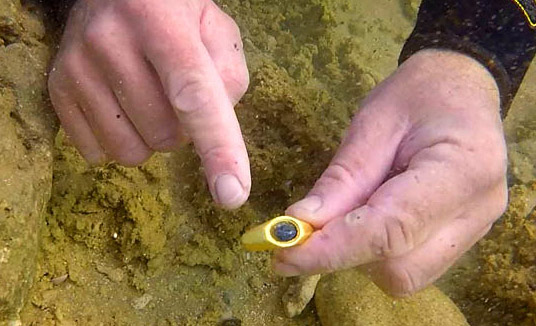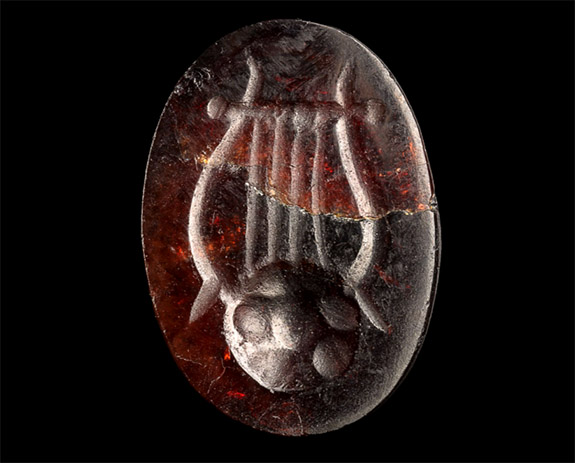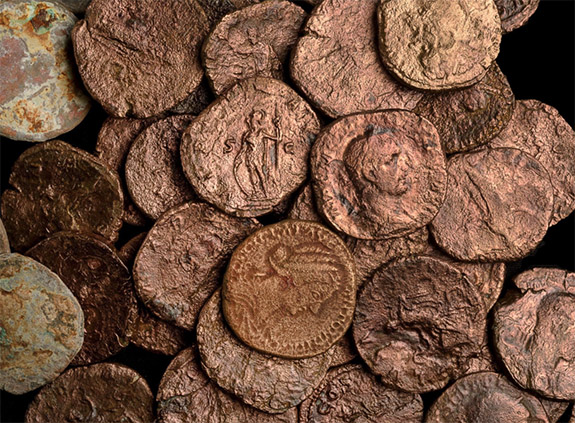Two ships that sank in the exact location more than 1,000 years apart in the ancient port city of Caesarea are yielding a bounty of jewelry, gems, coins and artifacts for the Marine Archaeology Unit of the Israel Antiquities Authority (IAA).
Among the rarest and most fascinating items pulled from the ocean floor is a thick gold ring set with a greenish-blue gemstone carved with the figure of a young shepherd boy dressed in a tunic and carrying a ram or a sheep on his shoulders. The depiction of the "Good Shepherd" is one of the earliest images used in Christianity for symbolizing the compassionate and benevolent characteristics of Jesus.
The ring was recovered from the remains of the older of the two wrecks and dates to the third century AD. The jewelry was likely owned by someone of a very high position who was also an early practitioner of Christianity. According to the IAA, Caesarea housed one of the first Christian communities.
Also recovered from the older wreck was a carved red gemstone that might have been set in a "gemma" ring, said the IAA. An ancient string instrument called a lyre is artfully carved into cabochon-cut stone. In Jewish tradition, the instrument is known as a "kinnor,' or King David's harp.
Both ships apparently were destroyed during violent storms while attempting to seek refuge at Caesarea, a major port that was originally built by the Roman King Herod the Great in the year 25 BC.
A team of divers from the Israeli Antiquities Authority’s Marine Archaeology Unit had been conducting a routine survey of the ocean floor near Caesarea, a town about 35 miles north of Tel Aviv, when they encountered the wrecked hulls of two ships at a depth of about 4 meters (13 feet).
The marine treasures included the following:
- Hundreds of silver and bronze Roman coins from the mid-third century AD.
- A large hoard of 560 silver coins from the Mamluk period (14th century AD).
- A bronze figurine in the form of an eagle (symbolizing Roman rule).
- A figurine of a Roman pantomimus in a comic mask.
- Numerous bronze bells (used to ward off evil spirits).
- Pottery vessels.
- An inkwell.
- Multiple metal items from the hull of a wooden ship, including dozens of large bronze nails, lead pipes from a bilge pump and a large iron anchor broken in pieces — attesting to the force it withstood until it finally snapped, probably in a storm.
Check out the IAA's informative video about the treasures recovered from the Caesarea wrecks…
Credits: Photos by Yaniv Berman and Dafna Gazit, Israel Antiquities Authority.




